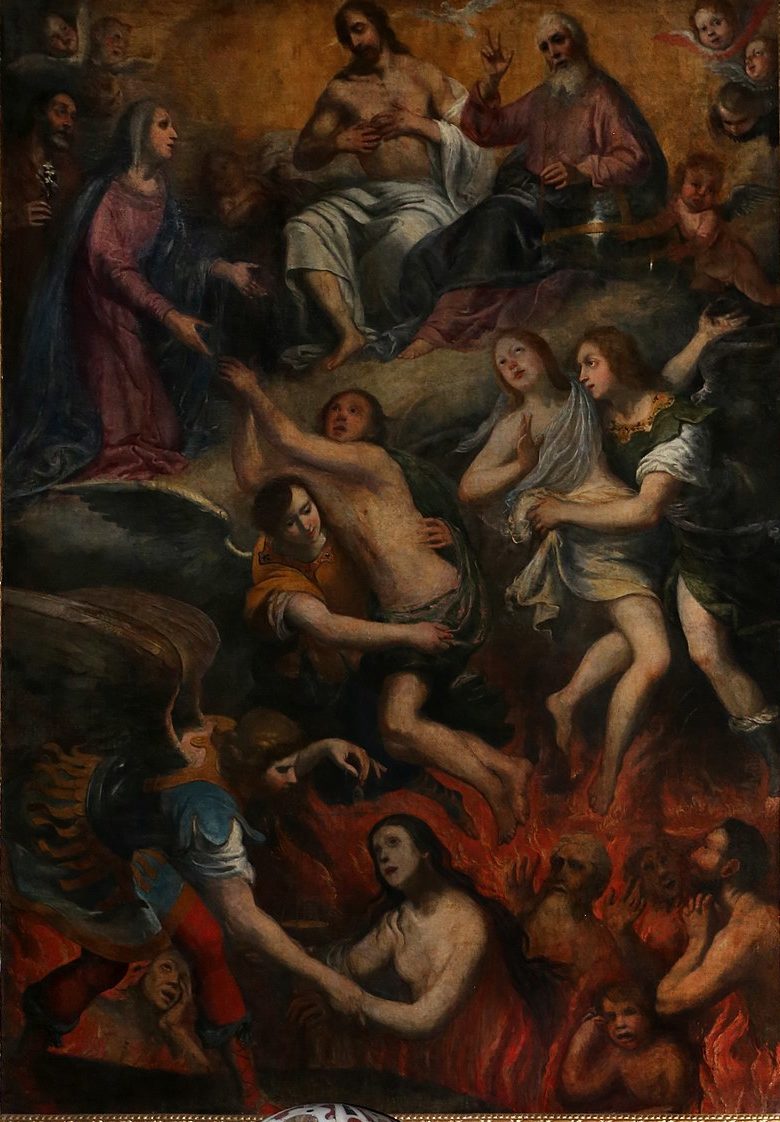
Giuseppe Badaracco, The Virgin and St Joseph interceding with the Trinity for the souls of the Purgatory, oil on Canvas, 271 x 190 cm. 1642. Cathedral of Saint Mary, Bastia. (Photo Credit: Wikimedia Commons. Creative Commons Attribution 3.0).
The large altarpiece with The Virgin and St Joseph interceding with the Trinity for the souls of the Purgatory was painted in 1642 for the cathedral of Saint Mary in Bastia. Characterised by an austere and didactic style, the canvas was appreciated to such an extent by Corsican patrons that several copies of it were ordered from local artists. In this regard, eighteenth-century reproductions made by Marco Antonio de Santis are recognisable in the churches of Moltifao, Tenda and Ville di Paraso, a copy made in the eighteenth century by Severino Farinole is kept in Meria, while a further copy, datable to the middle of nineteenth century, it was painted by the Umbrian Luigi Brunetti for the parish church of Palasca. Badaracco’s work is organised in three separate levels. Occupying central importance in the upper composition is Christ who is seated with his hands to his chest at his sacred wound, as if offering his sacrificial blood to bring eternal healing to mankind. His self-assured manner both commands attention and transcends the surrounding chaos and fear. To the right of Christ is God the Father, making a gesture of blessing with his right hand. He is seated on the outer edge of an orb or globe, a symbol of the world and his universal sovereignty, and surrounded by angels, one of whom appears to support the globe by hand.
In between Christ and God the Father is the Holy Spirit in the form of a dove, whose role in the Trinity as the comforter also proposes a warm and positive energy. To the left are the Virgin and Saint Joseph interceding, looking up to Christ with outstretched hands as if to plead with him—herself not able to determine providence—to save someone who might otherwise be condemned to hell. The figure beneath her reaches up toward her while being lifted up and rescued from the fires of hell by an angel. A similar scene occurs to the right where two figures are being lifted toward heaven.
The lower third of the composition shows the ultimate condemnation of the damned into hell. The use of reds and oranges as well as twisted, fearful faces intensifies the horror of the Inferno. An angel reaches out to save a woman whose body is half-engulfed in the flames of hell, picking her out. The energy of this work is highly dynamic with strong diagonal lines cutting across the composition, drawing the viewer’s eye upward and implying divine agency, with its promise of ascent to the heavenly realm and symbolising the potential of sinners to be saved from eternal condemnation.